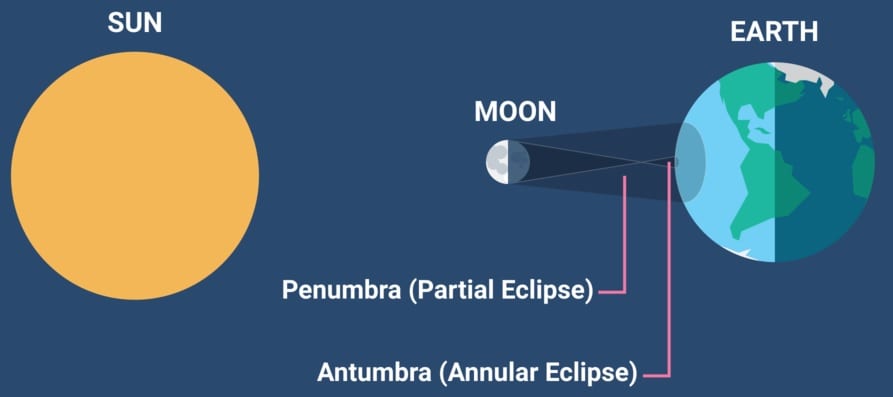On Oct. 14, an annular or “ring of fire” solar eclipse will cross North, Central and South America, visible for millions of people in the Western Hemisphere.

During an annular eclipse, it is never safe to look directly at the Sun without specialized eye protection designed for solar viewing.
Safety Guidelines:
The Sun is never completely blocked by the Moon during an annular solar eclipse. Therefore, during an annular eclipse, it is never safe to look directly at the Sun without specialized eye protection designed for solar viewing.
Viewing any part of the bright Sun through a camera lens, binoculars, or a telescope without a special-purpose solar filter secured over the front of the optics will instantly cause severe eye injury.
When watching an annular solar eclipse directly with your eyes, you must look through safe solar viewing glasses, aka “eclipse glasses,” or a safe handheld solar viewer at all times. Eclipse glasses are NOT regular sunglasses; regular sunglasses, no matter how dark, are not safe for viewing the Sun. Safe solar viewers are thousands of times darker and ought to comply with the ISO 12312-2 international standard.
NASA does not approve any particular brand of solar viewers.
Image courtesy of NASA
Always inspect your eclipse glasses or handheld viewer before use; if torn, scratched, or otherwise damaged, discard the device. Always supervise children using solar viewers.
Do not look at the Sun through a camera lens, telescope, binoculars, or any other optical device while wearing eclipse glasses or using a handheld solar viewer — the concentrated solar rays will burn through the filter and cause serious eye injury.